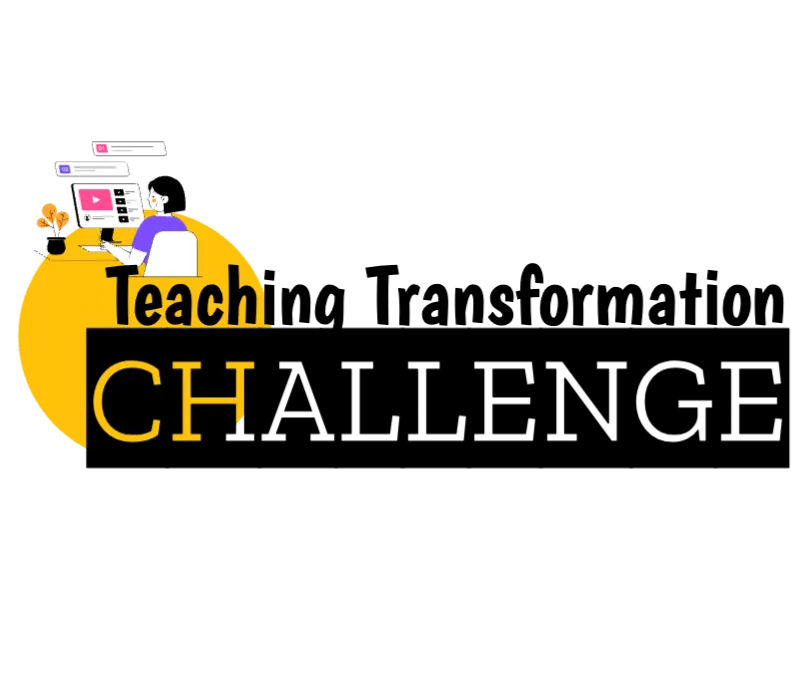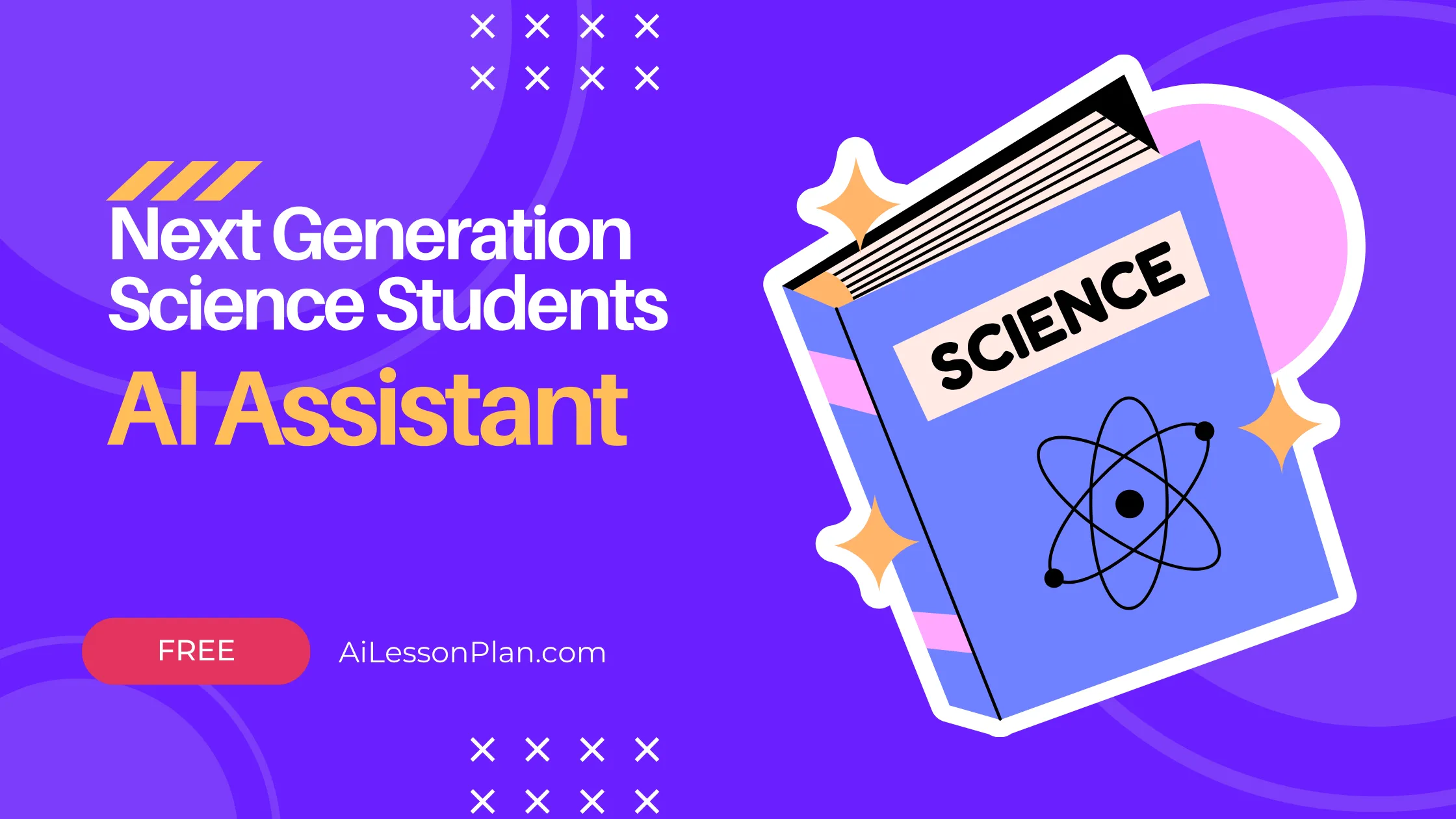NGSS Guide: Standards, AI Assistant, & Implementation Tips
NGSS Guide: Standards, AI Assistant, & Implementation Tips
Are you a science teacher looking for a better way to implement the Next Generation Science Standards (NGSS)? Or maybe you're a student trying to understand these new standards.
In either case, this comprehensive guide is for you. We will go over everything from the history and objectives of NGSS to the specific standards for each grade level.
We'll also dive into the three dimensions of science learning, including crosscutting concepts, science and engineering practices, and disciplinary core ideas. And if that wasn't enough, we'll also cover how AI assistants can be used to facilitate comprehension of NGSS.
Whether you're a teacher or student, this guide has everything you need to know about NGSS implementation and how it can benefit your education.
Try our FREE NGSS Ai Assistant Tool
As you may already know AiLessonPlan.com is helping thousands of educators cut down on their planning and administrative time so they can fight burnout, and take back more of their free time for what matters.
We thought we could help you navigate the dense NGSS information by developing FREE Ai Assistant that is specifically trained on NGSS. Try it out below, and if you haven't tried our suite of AI Tools- Sign up for a FREE trial here.
Understanding NGSS: A Comprehensive Guide
NGSS, or Next Generation Science Standards, are internationally benchmarked science education standards that aim to improve science education in a coherent manner.
These standards integrate core ideas, disciplinary practices, and crosscutting concepts, preparing students for college, career, and citizenship. They have been adopted by multiple states across the country, including Maine and Washington.
The NGSS standards were developed by the National Research Council (NRC) and the National Science Teachers Association (NSTA), with input from a science expert panel. Appendix K of the NGSS provides additional guidance for science teachers and can be accessed in PDF format on the NSTA website. September, November, January, December, and April are key months for adopting and implementing these new science standards.

The Genesis and Objective of NGSS
NGSS, developed by a consortium of lead state partners, aims to provide a research-based, coherent science education framework. By integrating research, science education standards, and expert input, NGSS standards focus on core ideas, disciplinary practices, and crosscutting concepts to improve science education.
These standards align with other national education standards, such as the Common Core, and have been adopted by multiple states across the country.
Adoption and Reception of NGSS
The NGSS standards have been widely adopted by a majority of states in the US, ensuring a common science education framework across the country. These standards have been positively received by science teachers and education professionals for their high level of educational quality.
Furthermore, NGSS standards have been internationally benchmarked, providing a solid foundation for science education that prepares students for future challenges.
Delving into the NGSS Standards
NGSS standards span from kindergarten to grade twelve, encompassing science education. They emphasize core ideas, disciplinary practices, and crosscutting concepts, creating a coherent progression for students. Disciplinary core ideas cover physical sciences, life sciences, and space systems.
The standards are aligned with research from organizations like the National Research Council, ensuring their validity. By adopting NGSS, educators can provide a solid foundation for students' scientific understanding.
Kindergarten through Grade Five Standards

NGSS standards for kindergarten through grade five provide a solid foundation for science education. These standards focus on core ideas, disciplinary practices, and crosscutting concepts.
Students in these grades are introduced to various scientific topics including chemical reactions, space science, life sciences, and physical sciences. The standards also offer grade level progressions to guide teachers in their instruction. Moreover, NGSS standards for kindergarten through grade five are internationally benchmarked.
Grades Six through Eight Standards
NGSS standards for grades six through eight build upon the foundation of science education, deepening students' understanding of core ideas, disciplinary practices, and crosscutting concepts.
These standards cover a wide range of topics including physical sciences, life sciences, space systems, and climate change. They progress towards high school level science education, providing opportunities for hands-on, inquiry-based learning. By adopting NGSS standards, educators can guide students towards a comprehensive understanding of scientific principles.
Grades Nine through Twelve Standards

Grades nine through twelve standards in NGSS provide advanced science education, focusing on core ideas, disciplinary practices, and crosscutting concepts. These standards cover a wide range of topics including physical sciences, life sciences, space systems, climate change, chemical reactions, and more.
They aim to prepare students for college, career, and citizenship, aligning with college and career readiness standards. By adopting these new science standards, students can benefit from enhanced learning opportunities.

How AI Assistant Can Facilitate NGSS Comprehension
AI assistants play a crucial role in facilitating comprehension of NGSS standards. These assistants provide personalized and interactive learning experiences that cater to individual needs.
With the ability to answer questions, offer explanations, and provide practice opportunities, AI assistants enhance students' understanding of NGSS. Furthermore, they assist teachers in implementing the standards in the classroom, offering real-time feedback and assessment of students' progress. By adapting to individual learning needs, AI assistants effectively support NGSS comprehension.
How can AI assistant transform your understanding of NGSS?
AI assistants have the potential to revolutionize your understanding of NGSS. By offering interactive simulations, virtual labs, and multimedia resources, they can help you explore core ideas, disciplinary practices, and crosscutting concepts.
These assistants also analyze performance, provide personalized support, facilitate collaboration, and track progress for effective NGSS comprehension.
Give it a try for yourself...
THE THREE DIMENSIONS OF SCIENCE LEARNING
The NGSS standards emphasize the three dimensions of science learning: core ideas, disciplinary practices, and crosscutting concepts. Core ideas encompass various topics like physical sciences, life sciences, and climate change.
Disciplinary practices involve scientific and engineering practices such as asking questions and analyzing data. Crosscutting concepts provide connections between these dimensions and real-world phenomena. By integrating these dimensions, NGSS promotes a cohesive and comprehensive science education.
Crosscutting Concepts
Crosscutting Concepts are an integral part of NGSS. They involve identifying patterns of change, cause and effect, and systems in science. These concepts help us analyze scientific phenomena by applying ideas related to patterns, systems, energy, and matter.
Integrating information across different science disciplines allows for a better understanding of complex systems. Models play a crucial role in making predictions and explanations, while concepts of scale, proportion, and quantity help analyze scientific data.
Science and Engineering Practices
Engaging in scientific inquiry involves asking questions, planning investigations, and analyzing data. Developing and using models help understand and explain scientific phenomena.
Mathematical and computational thinking is vital to solving scientific problems. Constructing explanations and designing solutions based on evidence and scientific principles is essential. Effective communication and collaboration with others facilitate the sharing of ideas, findings, and solutions.

Disciplinary Core Ideas
In the NGSS, disciplinary core ideas encompass a wide range of scientific concepts. These include understanding core ideas in physical sciences, life sciences, earth and space sciences, and engineering.
In the physical sciences, students explore topics such as chemical reactions, energy, forces, matter, and waves. Life sciences delve into life processes, ecosystems, genetics, evolution, and human impact on the environment. Earth and space sciences examine Earth systems, climate change, space systems, and human impact. Lastly, engineering focuses on applying technology and science to real-world problems.
RUBRIC FOR LESSONS AND UNITS
To ensure the alignment of lessons and units with NGSS standards, use a rubric to evaluate engagement, coherence, and rigor of instructional materials. Consider the clarity of learning objectives, progressions, and science practices.
Assess the integration of disciplinary core ideas, crosscutting concepts, and science standards. The rubric can guide curriculum development, revision, and improvement.

MIDDLE AND HIGH SCHOOL COURSE MAPPING
Middle and high school course mapping is a crucial aspect of implementing NGSS in science education. It involves aligning NGSS standards, core ideas, science practices, and crosscutting concepts to grade level expectations.
By designing coherent and integrated science curricula, educators can ensure vertical alignment of standards, progressions, and learning outcomes. Course maps serve as valuable tools for guiding instructional planning, sequencing, and assessment.
EVIDENCE STATEMENTS
Evidence statements are valuable tools for educators implementing the NGSS standards. They provide clarity on the performance expectations and help teachers understand the level of proficiency and complexity that students should demonstrate.
By aligning assessment tasks, questions, and prompts to evidence statements, educators can effectively guide instructional planning, formative assessment, and progress monitoring. Additionally, evidence statements serve as a valuable resource for curriculum development and professional development initiatives. Utilizing evidence statements supports effective implementation of the NGSS standards.
Frequently Asked Questions
What do the NGSS mean?
The NGSS, or Next Generation Science Standards, are a set of K-12 science standards that outline what students should know and be able to do in science. These standards incorporate three dimensions of learning: disciplinary core ideas, science and engineering practices, and crosscutting concepts. Their aim is to promote scientific literacy and prepare students for college, career, and citizenship.
How is NGSS different from old standards?
NGSS sets itself apart from old standards by integrating science concepts with real-world applications, emphasizing engineering, technology, and mathematics, promoting inquiry-based learning, and taking a three-dimensional approach to teaching science.
Is NGSS the same as common core?
NGSS (Next Generation Science Standards) is not the same as common core. While common core focuses on math and language arts, NGSS emphasizes science education with a focus on integrating scientific practices, cross-cutting concepts, and disciplinary core ideas. Both aim to improve student learning outcomes.
What is the difference between stem and NGSS?
STEM education focuses on integrating science, technology, engineering, and mathematics to solve real-world problems. On the other hand, NGSS goes beyond teaching science content and emphasizes scientific practices and cross-cutting concepts.
Why were NGSS standards developed?
The development of NGSS standards aimed to provide a consistent and high-quality science education for students nationwide. These standards reflect current research and practices in science education and prepare students for STEM careers. With an emphasis on inquiry-based learning and critical thinking, NGSS promotes equity in science education by ensuring access to quality instruction and resources.
How do NGSS standards differ from previous science education standards?
NGSS standards differ from previous science education standards by focusing on three dimensions: science and engineering practices, crosscutting concepts, and disciplinary core ideas. They emphasize integrating scientific knowledge with real-world applications and promote a deeper understanding of concepts rather than just memorization. Students are encouraged to ask questions, conduct investigations, and communicate their findings.
What is the goal of NGSS standards?
The objective of NGSS standards is to establish a consistent science education system nationwide. These standards aim to enhance students' comprehension and application of scientific concepts while encouraging critical thinking, problem-solving, and engagement in scientific practices. Additionally, NGSS emphasizes the integration of science with engineering and technology.
How are NGSS standards implemented in the classroom?
NGSS standards are implemented in the classroom through a three-dimensional approach, integrating science and engineering practices, disciplinary core ideas, and cross-cutting concepts. Teachers align lesson plans with NGSS standards, use instructional materials meeting NGSS criteria, and promote student-centered inquiry-based learning. Assessment strategies reflect all three dimensions to assess student mastery.
What challenges do teachers face when implementing NGSS standards?
Teachers face various challenges when implementing NGSS standards. They need new instructional materials aligned with the standards and must shift from teacher-centered to student-centered learning. Integrating science and engineering practices can be difficult, but professional development opportunities can help overcome these challenges.
How does NGSS promote a more engaging and interactive approach to science education?
NGSS promotes an interactive approach to science education by emphasizing hands-on learning and inquiry-based methods. Students are encouraged to ask questions, design experiments, and analyze data. Integration of engineering practices allows students to apply scientific knowledge in real-world scenarios. AI assistants can enhance engagement and understanding.
What resources are available for teachers to help them implement NGSS standards effectively?
Teachers have several resources available to assist them in implementing NGSS standards effectively. The National Science Teaching Association (NSTA) offers support, professional development, and resources. The Next Generation Science Storylines project provides instructional materials aligned with NGSS. State education departments often offer NGSS-specific professional development opportunities. Additionally, AI assistants like Twig Education's "Twig Coach" provide personalized support for NGSS implementation.

Conclusion
The NGSS (Next Generation Science Standards) provide an effective framework for science education. With the adoption and reception of NGSS, educators have a comprehensive guide to teaching science effectively. The standards are organized by grade level, allowing teachers to tailor their instruction to meet the needs of their students.
One of the most exciting aspects of NGSS implementation is the use of AI assistants. These assistants can transform the way educators and students interact with the material, providing personalized learning experiences and real-time feedback.
Additionally, understanding the three dimensions of science learning - crosscutting concepts, science and engineering practices, and disciplinary core ideas - is crucial to successful NGSS implementation. By using rubrics, course mapping, and evidence statements, educators can ensure that their lessons and units align with the standards.
In conclusion, the NGSS offers a comprehensive guide to science education, and the use of AI assistants can enhance the learning experience. By incorporating the three dimensions of science learning, educators can effectively implement the standards and provide students with a solid foundation in science education.







